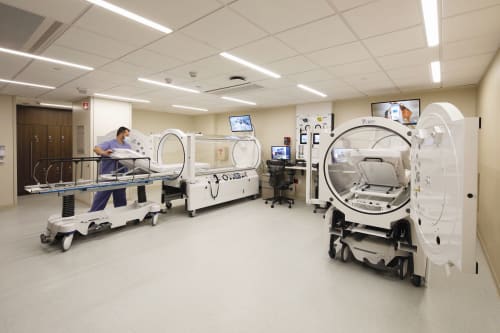Maxcine Evans has had a rough go of it. But, as White Plains Hospital surgeon Dr. Joseph Cavorsi puts it, “She’s one tough cookie.”
Now 65 years old, Evans underwent a Whipple procedure some 10 years ago at another hospital. Also known as a pancreaticoduodenectomy, the operation removes the head of the pancreas, the first part of the small intestine (duodenum), the gallbladder and the bile duct.
While the procedure was a success, Evans soon developed uterine cancer, which required the removal of her uterus. Her treatment involved radiation therapy, which can be a godsend for certain cancer patients; however, with radiation therapy there is also a potential for radiation burns – which can be extremely painful.
“It was the most agonizing experience I’ve ever had,” Evans says of the 2015 procedure and its aftermath. “I had third degree burns around my pelvis area, and a lot of scarring on both sides of my legs. And I had a lot of itching – for eight years. It felt like I was coming out of my skin. Anytime I sat down or stood up, or did anything, was a horrific experience.
“I went back and forth with a lot of doctors,” she adds, “until eventually one of my cancer doctors suggested the hyperbaric oxygen therapy.”
That led her to White Plains Hospital’s Center for Advanced Medicine and Surgery (CAMS) and Dr. Cavorsi, whose specialty is wound care, who agreed that that was the best option for addressing Evans’ situation.

Hyperbaric chambers at White Plains Hospital's Center for Advanced Medicine & Surgery.
Hyperbaric oxygen therapy (HBOT) involves reclining in one of the Hospital’s two computer-assisted hyperbaric chambers, which are made of clear glass so patients can easily see out, while 100% oxygen is pumped in at increased atmospheric pressure. (The air we breathe is 21% oxygen.) The increased air pressure in the chamber helps the lungs collect more oxygen, which in turn provides more oxygen to the damaged tissues.
HBOT’s wound-healing applications are based on the fact that pure and pressurized oxygen works like an antimicrobial to rid tissues of bacteria, making it an effective treatment for drug-resistant infections. All damaged tissues or wounds tend to have low or inadequate concentration of oxygen preventing proper healing. HBOT delivers high concentration of oxygen to damaged tissue allowing for proper healing.
HBOT not only heals the wound itself, but also oxygenates the entire body thus promoting increased health to normal tissues and organs.
“Although the uterine cancer had been addressed, the burns and scarring in the pelvic area had led to some serious infection,” Dr. Cavorsi explains. “She had horrible, painful lesions for at least a year. Imagine not healing from something like that for an entire year.”
Dr. Cavorsi knew HBOT could help relieve her pain, but it was a lengthy process. “I had 30 treatments of 100 minutes each over a number of months,” Evans says. “But it was actually a wonderful experience. Dr. Cavorsi and his team were so affable, and they have a movie list while you’re lying there. I told them all I needed was some popcorn!”
“She was very upbeat, considerate and appreciative to everyone, a pleasant patient to treat,” Dr. Cavorsi adds, “and she had a really good response to the therapy. Basically, her radiation damaged tissues healed and there’s no reason for follow-ups unless she develops a recurrence. But she’s certainly welcome to come back and visit anytime.”
“I’m very happy I did it,” Evans says. “It really changed my life. I feel like a real human being again.”
